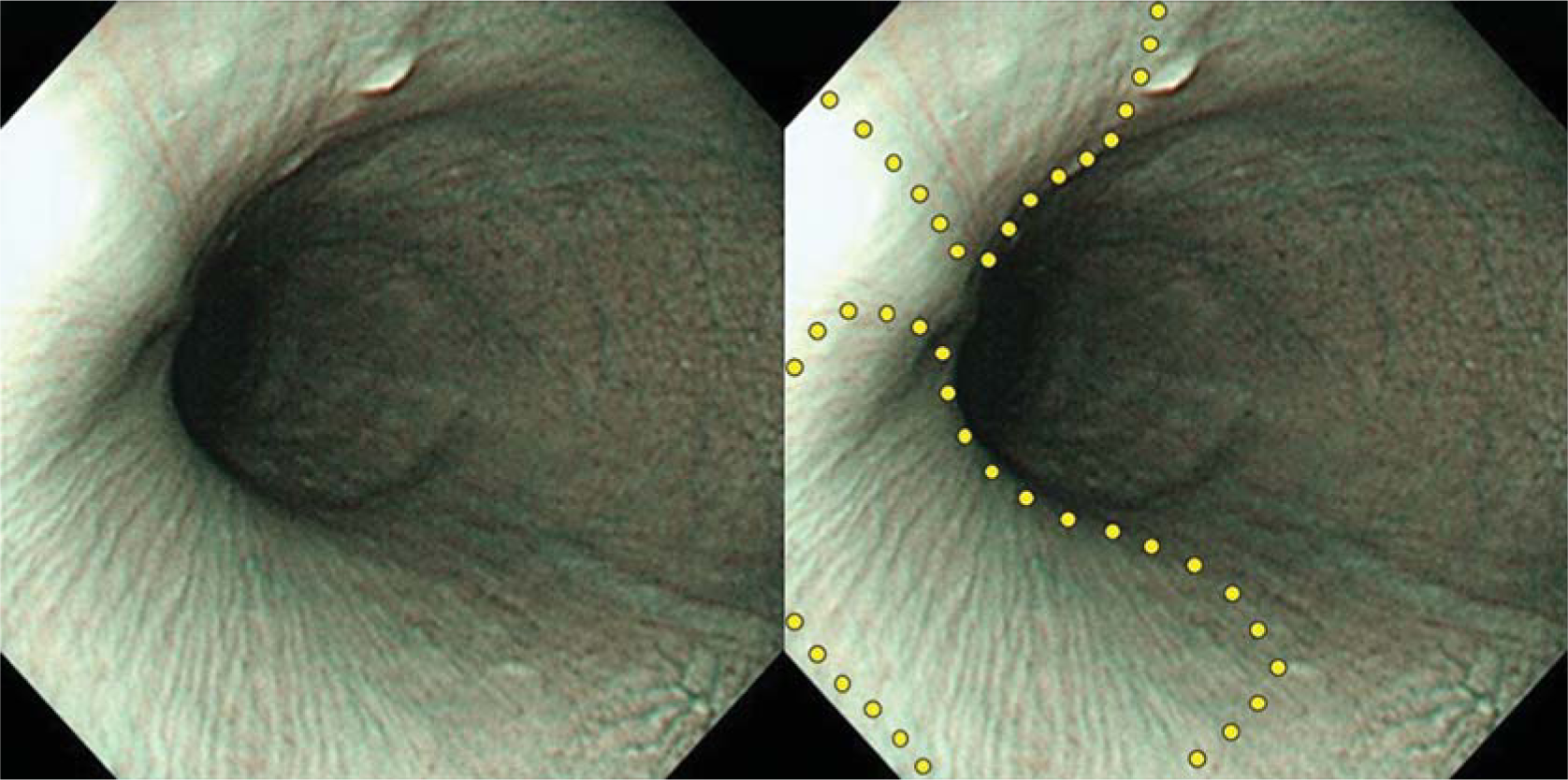Translate this page into:
Achalasia: Pinstripe pattern
[To cite: Kajihara Y. Achalasia: Pinstripe pattern. Natl Med J India 2024;37:114. DOI: 10.25259/NMJI_144_2023]
A 38-year-old man with no medical history presented to the author’s department with a 1-year history of progressive dysphasia. Oesophagogastroduodenoscopy showed abnormal retention of fluid in the oesophagus. In addition, narrow band imaging (NBI) revealed longitudinal superficial wrinkles forming a ‘pinstripe pattern’ in the lower oesophagus (Fig. 1). These findings suggested achalasia. Oesophageal manometry confirmed the diagnosis of achalasia, and the patient underwent peroral endoscopic myotomy (POEM).

- Narrow band imaging showing longitudinal superficial wrinkles, also known as ‘pinstripe pattern’
Although achalasia is a well-known risk factor for oesophageal cancer, there is no known way of preventing or reversing achalasia.1 The recent development of less invasive and curative treatments such as POEM emphasizes the importance of early diagnosis for achalasia.2
In general, achalasia is diagnosed by oesophageal manometry.1,2 However, in Japan, this examination has not gained widespread use.2 In Japan, a new endoscopic appearance ‘pinstripe pattern’ is believed to be a reliable indicator for early detection of achalasia: the sensitivity and specificity have been reported to be 64.7% and 100%, respectively.2 The pathogenesis may be associated with early changes in the superficial epithelium before mucosal thickening due to chronic retention of food.2 Since the ‘pinstripe pattern’ can be missed at standard white light endoscopy, NBI as well as indigo carmine dye spray is used for detection.2
In many countries, endoscopy has a relatively minor role other than to exclude pseudoachalasia.1 The ‘pinstripe pattern’ is still not used in routine practice; therefore, this finding is worth revisiting.
Conflicts of interest
None declared
References
- Disorders of the esophagus In: Longo DL, Fauci AS, Kasper DL, Hauser SL, Jameson JL, Loscalzo J, eds. Harrison’s principles of internal medicine (18th ed). New Yolk: McGraw-Hill; 2012. p. :2430-2.
- [Google Scholar]
- New endoscopic indicator of esophageal achalasia: “Pinstripe pattern”. PLoS One. 2015;10:e0101833.
- [CrossRef] [PubMed] [Google Scholar]




